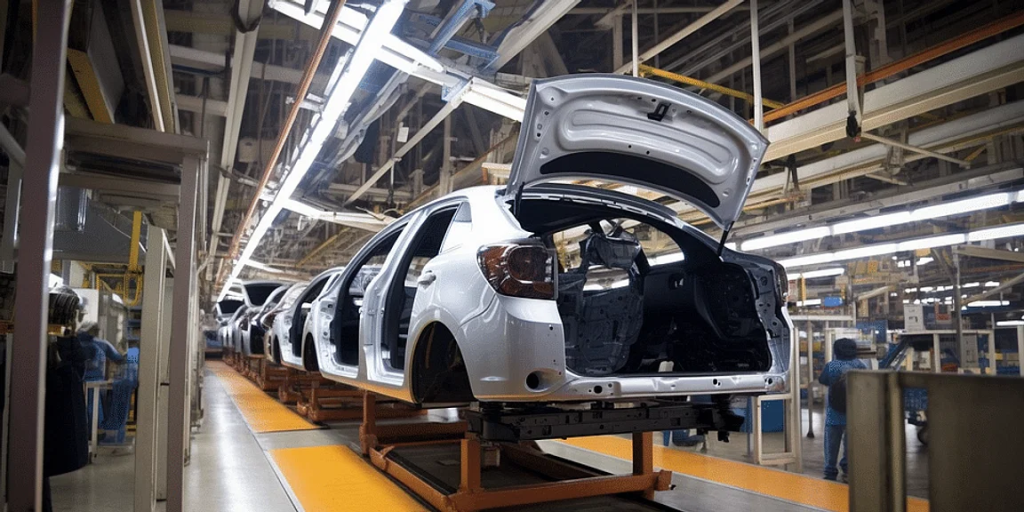The modern car is a marvel of engineering, a complex fusion of mechanical systems and cutting-edge technology. Beneath the sleek exterior lies a symphony of interconnected components working together to provide power, efficiency, and safety. In this article, we delve beneath the surface to decode the mechanics of modern cars, unraveling the intricate web of systems that make our vehicles run smoothly on the road. In the automotive field, one might wonder, can low battery cause abs light to come on as electrical issues can sometimes trigger unexpected dashboard warnings.
The Heart of the Matter: The Engine
At the core of every car’s mechanical system is the engine—the power plant that converts fuel into the energy required for motion.
Combustion Engines
Combustion engines come in various forms, such as inline, V-shaped, and flat engines. These engines operate on the principle of controlled explosions within cylinders, converting the energy released from burning fuel into mechanical power. Fuel injection systems, sensors, and complex computer controls ensure optimal fuel-air mixture and combustion efficiency.

Electric Powertrains
Electric vehicles (EVs) have revolutionized the automotive landscape. Electric powertrains consist of electric motors powered by batteries. These motors deliver instantaneous torque and require minimal maintenance compared to traditional combustion engines. Energy regeneration during braking enhances efficiency and extends driving range.
Smooth Transitions: Transmission Systems
Transmission systems facilitate the transfer of power from the engine to the wheels, allowing the car to accelerate and maintain different speeds.
Automatic Transmissions
Automatic transmissions use hydraulic systems and complex gear arrangements to automatically shift gears based on speed and throttle input. Modern automatic transmissions incorporate electronic controls for seamless gear changes and improved fuel efficiency.
Manual Transmissions
Manual transmissions require the driver to manually engage gears using a clutch pedal and gear shifter. While less common today, they provide a more engaging driving experience and offer greater control over gear selection.
Safety and Control: Braking and Suspension
Braking and suspension systems play a critical role in ensuring safety, control, and ride comfort.
Brake Systems
Modern brake systems utilize hydraulic pressure to convert foot pressure into stopping power. Disc brakes, commonly used on all four wheels, provide efficient and consistent braking performance. Anti-lock Brake Systems (ABS) prevent wheel lock-up during hard braking, enhancing control.
Suspension Systems
Suspension systems consist of components that absorb shocks, maintain tire contact with the road, and provide a smooth ride. Coil springs, shock absorbers, and control arms work together to balance comfort and handling. Advanced systems like adaptive suspensions adjust stiffness based on driving conditions.
Intelligence and Control: Electronics and Sensors
Modern cars are equipped with an array of electronic systems and sensors that monitor and control various aspects of the vehicle.
Engine Control Units (ECUs)
ECUs are computers that manage engine performance, fuel injection, ignition timing, and emissions control. These systems optimize engine efficiency and power delivery based on real-time data.
Advanced Driver Assistance Systems (ADAS)
ADAS includes features like adaptive cruise control, lane-keeping assist, and collision avoidance. Sensors, cameras, and radar systems work together to enhance safety and reduce driver workload.
A Greener Future: Emission Control
In the age of environmental consciousness, emission control systems are pivotal in reducing harmful pollutants.
Catalytic Converters
Catalytic converters use catalysts to convert harmful gases like carbon monoxide, nitrogen oxides, and hydrocarbons into less harmful substances. This technology significantly reduces the environmental impact of exhaust emissions.
Electric Vehicle Management Systems
EVs utilize complex management systems to monitor battery health, temperature, and charging. These systems optimize battery life and performance while ensuring safe and efficient charging.
Conclusion
The mechanics of modern cars are a testament to human innovation and engineering prowess. The intricate interplay of engines, transmissions, brakes, and electronics results in the seamless and efficient performance we expect from our vehicles. As technology advances, the mechanics of cars continue to evolve, embracing greener solutions, enhanced safety, and improved driving experiences.